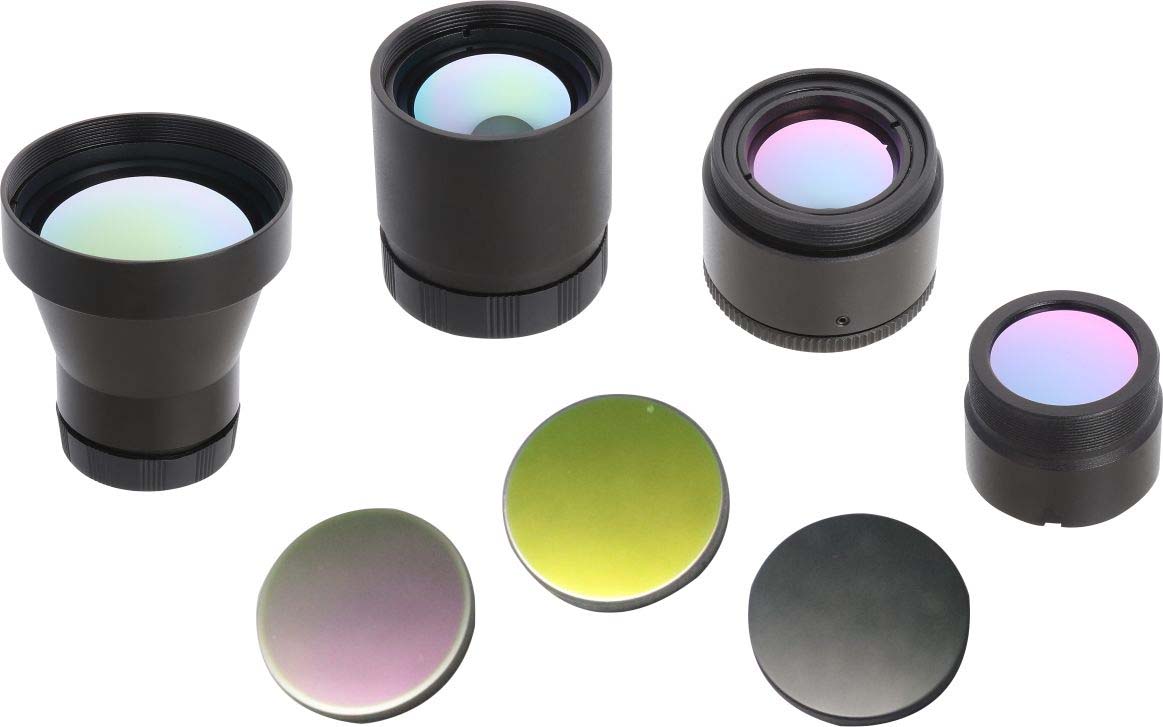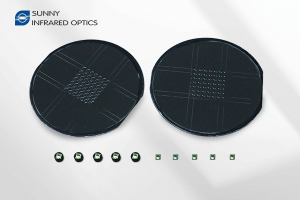In the optical system, when the light passes through the lens surface, it occurs refraction as well as reflection. The reflection will cause the loss of light energy and the reflected ghost image and stray light will lead to a poor imaging quality. Theoretically, the larger refractive index of uncoated lenses will lead to higher reflectivity and lower light transmittance.
In order to improve the effective utilization of light energy and solve the problem of light reflection in the optical system, AR coating is usually applied on the lens surface. According to the interference cancellation principle of reflected light between the coating and lens surface, a reasonable coating composite structure is designed which ultimately weakens the reflected light energy and enhances the transmitted light energy.

1. The transmittance of Si lens is about 45% when it is not coated, and it reaches 80% after coating.
2. The transmittance of Ge lens is about 45% when it is not coated, and it reaches 98% after coating.
3. The transmittance of SIG6 lens is about 63% when it is not coated, and it reaches 98% after coating.
The uncoated infrared lenses not only have low transmittance, but also have poor mechanical strength, weak chemical corrosion resistance and High dirt adsorption capacity, which ultimately affects the imaging quality and product life. Instead, the comprehensive performance of lens has been greatly improved with AR coating, as follows:
● AR coating can improve the transmittance and reduce reflected ghost and stray light;
● AR coating can improve the anti-scratch ability to effectively protect the lens surface;
● AR coating can improve the resistance ability on water vapor, salt spray and acid-alkali erosion to extend the product life.
Usually, the long wave infrared band is 8-14 microns and the medium wave infrared band is 3-5 microns. Different detectors have different response bands. Therefore, it is necessary to confirm the corresponding design band when selecting the AR coating. If the selection of the band is unreasonable, the final imaging performance will be affected.
Even in long wave infrared applications, uncooled detectors have a wider response range than cooled detectors in the waveband above 12 microns, so the corresponding AR coating also has anti-reflection and high transmission requirements for wider waveband. Besides, it should be noted that the new detectors with wider response range will have wider waveband requirements.
The design of AR coating is based on the interference of light principle. The reflection performance of the same coating ranges from different incidence angles. Furthermore, with the increase of the incident angle, the effective reflection band will shift to the shorter band. Therefore, in addition to the optical performance at normal incidence, it is necessary to determine the reflectivity and transmittance requirements at different incident angles according to the actual incident angle range of the coating in the optical system, so that the overall performance of the optical system can be optimized.
AR is the most widely used coating. It has different requirements of environmental resistance for different applications. However, due to the contradiction between environmental resistance and optical performance as well as technical and cost constraints, it is hard to achieve the best in all aspects. So we need to choose the most suitable AR coating according to the actual use: for applications with strong wind, sand or dust, the coating with strong anti-friction ability is more suitable; for marine-related applications, it should be chosen the coating with strong resistance to salt spray; for scenes with high humidity, it would be better to choose the coating with strong resistance to water vapor; and when exposed to acid or corrosive gas, the coating with strong acid resistance needs to be selected.
Actually, the environmental resistance ability of coating varies greatly from manufacturer to manufacturer due to factors such as processing technology. In this case, confirming the relevant reliability in advance can help you choose the optimal AR coating.
SUNNY INFRARED OPTICS is deeply involved in the infrared industry, and has rich experience in the development for various infrared applications, especially in the technological innovation, mass production stability and reliability of coating on chalcogenide glass which always takes the leading position in the industry. Please feel free to contact us if you have any infrared lens or coating related needs.

+86 574 6253 0985
No. 360, 362 Fengyue Road, Yangming Street, Yuyao, Zhejiang Province, China
Copyright © Ningbo Sunny Infrared Technologies Co., Ltd. (Subsidiary of Sunny Group) | Sitemap | Technical Support:
